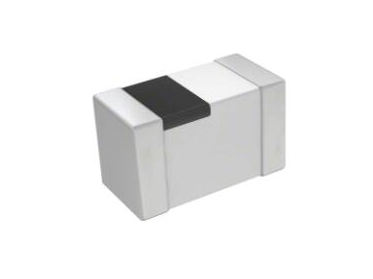Inductors, also known as chokes, reactors, and dynamic reactors, are components that can convert electrical energy into magnetic energy and store it. The structure of an inductor is similar to that of a transformer, but with only one winding. Let's first understand the structure and characteristics of the inductor, and see the following explanation.
The structure of the inductor
Inductors are generally composed of skeletons, windings, shields, packaging materials, magnetic cores or iron cores.
1. Skeleton
The skeleton generally refers to the support for winding the coil. Some larger fixed inductors or adjustable inductors (such as oscillating coils, choke coils, etc.), most of which are enameled wire (or yarn-covered wire) around the skeleton, and then magnetic core or copper core, iron core, etc. Installed into the inner cavity of the skeleton to increase its inductance.
The skeleton is usually made of plastic, bakelite, and ceramics, and can be made into different shapes according to actual needs. Small inductors (such as color-coded inductors) generally do not use bobbins, but enameled wire is wound directly around the core. Air-core inductors (also known as unwrapped coils or air-core coils, mostly used in high-frequency circuits) do not use magnetic cores, skeletons and shields, etc., but are first wound on the mold and then take off the mold, and the coil is pulled between each coil. Drive a certain distance.
2. Winding
Winding refers to a group of coils with specified functions, which are the basic components of inductors. There are single-layer and multi-layer windings. There are two types of single-layer windings: dense winding (conductors are wound one turn after another) and intermediate winding (there is a certain distance between each wire during winding); multi-layer windings have layered flat winding, random winding Winding, honeycomb winding, etc.

3. Magnetic core and magnetic rod
The magnetic core and the magnetic rod are generally made of nickel-zinc ferrite (NX series) or manganese-zinc ferrite (MX series) and other materials. kind of shape.
4. Iron Heart
The core materials are mainly silicon steel sheets, permalloy, etc., and their shapes are mostly "E" type.
5. Shield
In order to prevent the magnetic field generated by some inductors from affecting the normal operation of other circuits and components, a metal screen cover (such as the oscillation coil of a semiconductor radio, etc.) is added to it. The use of shielded inductors will increase the loss of the coil and reduce the Q value.
6. Packaging materials
After some inductors (such as color code inductors, color ring inductors, etc.) are wound, the coils and magnetic cores are sealed with packaging materials. The encapsulation material is plastic or epoxy resin.
Characteristics of Inductors
The characteristics of an inductor are just the opposite of those of a capacitor. It has the characteristic of preventing the passage of alternating current and allowing direct current to pass smoothly. The resistance of the DC signal passing through the coil is the resistance voltage drop of the wire itself is very small; when the AC signal passes through the coil, a self-induced electromotive force will be generated at both ends of the coil, and the direction of the self-induced electromotive force is opposite to the direction of the applied voltage, hindering the passage of AC , so the characteristics of the inductor are to pass DC and block AC. The higher the frequency, the greater the coil impedance. Inductors often work with capacitors in circuits to form LC filters, LC oscillators, etc. In addition, people also use the characteristics of inductance to manufacture choke coils, transformers, relays, etc.
Direct current: It means that the inductor is in a closed state to the direct current. If the resistance of the inductor coil is not considered, then the direct current can pass through the inductor "unimpeded". For direct current, the resistance of the coil itself has very little hindering effect on direct current, so Often ignored in circuit analysis.
Resisting AC: When the AC passes through the inductive coil, the inductor has a blocking effect on the alternating current, and the inductive reactance of the inductive coil is what hinders the alternating current.
An inductor has a certain inductance, it only hinders the change of current. If the inductor has no current flowing, it will try to block the flow of current through it when the circuit is on; if the inductor has current flowing, it will try to maintain the current flow when the circuit is off. Inductors mainly play the functions of filtering, oscillation, delay, notch, etc. in the circuit, as well as filtering signals, filtering noise, stabilizing current and suppressing electromagnetic wave interference. The most common role of inductors in circuits is to form LC filter circuits together with capacitors. When purchasing electronic component products, for users, finding a reliable platform is half the battle, especially in the current market of shortages and rising raw material prices, everyone's life is difficult, a reliable procurement platform , it is particularly important, I recommend Ameya360 here, which is a component procurement platform with a complete range, high quality and fast delivery.

